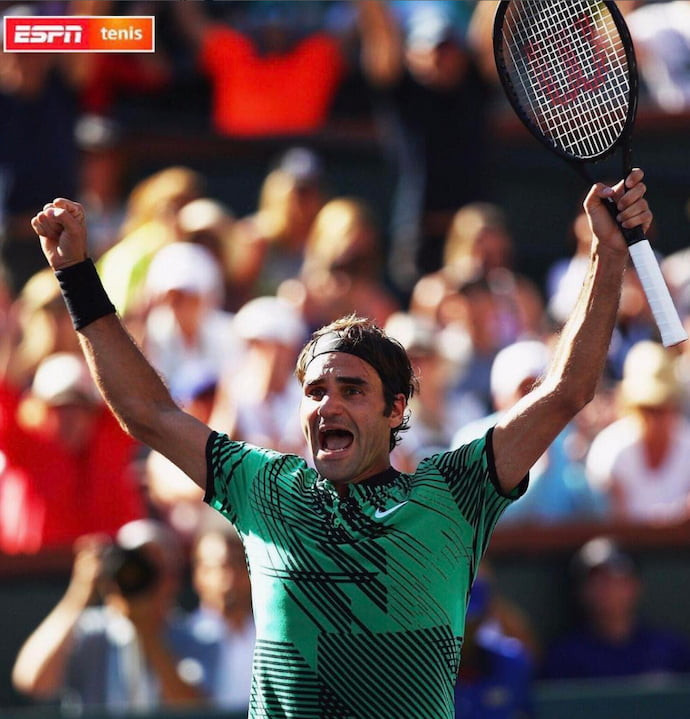The Loser’s Game
In 1975, Charles D. Ellis, an investment consultant, writer, and founder of Greenwich Associates, published an influential article entitled, “The Loser’s Game.” As he explains in the below interview with Stephen Foerster, Ellis owes the insights explored in the article to Simon Ramo, who wrote in his book, Extraordinary Tennis for the Ordinary Tennis Player, that there are essentially two games of tennis. One of them is played professionals, which he calls the Winner’s Game. The second is played by amateurs, which he calls the Loser’s Game. Even though the mechanics look the same, the players use the same equipment, and the same rules are enforced, the games are completely different.
The Winner’s Game
For professionals, think of the Williams sisters or Roger Federer. When they play tennis, they use precision, strength, and strategy to push their opponents to the brink. When you watch them, they oftentimes barely move, but send the ball to opposing sides of the court, making their opponent run back and forth until they eventually make a mistake or give up from exhaustion. They may also have studied up on their opponent before the game to know if they have a particularly dangerous backhand or dropshot. By the time they arrive to the court to play, they have a plan to defeat their opponent.

The Loser’s Game
The opposite is true for amateurs. In amateur tennis, you don’t need exceptional precision, strength, or an elaborate strategy. You do not need to push your opponent at all. You don’t need to know your opponent’s first name, let alone how good any of their shots are. All you really need to do is get the ball over the net and wait for the other player to mistake. Your opponent is likely doing the same.
Serving offers a clear example. For an amateur, the goal is to not double fault. Speed and strategic placement take a backseat to accuracy. For professionals, accuracy is a given. They need speed and strategic placement if they are to beat the other player.
Those who are playing against their opponent are playing to win. Those who are playing against themselves are playing to not lose—they are playing the losing game.
Jiu-Jitsu as a Loser’s Game
For Ellis, this had broad applications in the field of investing and entrepreneurship, but it can also be applied to contact sports like jiu-jitsu because jiu-jitsu is largely a loser’s game. Ryron and Rener Gracie, the grandsons of Hélio Gracie and two of the head instructors of Gracie University, said they learned a similar lesson for their grandfather when he told them, “If you don’t lose, you can only win.”
As they note in the above video, there are two ways of looking at this. The first is that there are two options in a fight: win or lose. If you don’t lose, then you win. While this is no doubt true, the greater insight is that not losing, not getting tapped, means that you will eventually exhaust your opponent. Even if you are defending the entire time, if your opponent is constantly working harder than you and less efficiently than you, they will eventually tire themselves out. This brings up another famous quote from Hélio: “I do not defeat my opponents, they defeat themselves.”
Survival as a First Principle
As jiu-jitsu has become more popular and a major part of mixed-martial arts fighting, there is a greater emphasis on submitting your opponent. However, this goes against Hélio’s initial teachings, which taught that even people without superior strength, speed, or agility can beat anyone by using patience, efficiency, and proper technique to weather the storm of fighting their opponent, and then launching an attack once they have become thoroughly exhausted.
This attitude won’t likely resonate with people who are in the prime of their lives and fairly new to jiu-jitsu. The 22-year-old blue belt who is hoping to one day fight professionally is not surviving when they are on the mat. They are dominating. However, as that person gets closer to 30 and gets their purple and brown belts, they may start to recognize the wisdom in patience and not always going hard and forcing the submission. Eventually, they will come to see survival as the primary principle that informs all other principles in jiu-jitsu—even efficiency, even leverage, even distance management).
As Rener notes, there’s nothing more exhausting than throwing punches that don’t land or attempting submissions that don’t land. It’s physically exhausting. It’s mentally exhausting. Eventually, your opponent will make a mistake. Once you recognize this fact, Ryron says, you will “let go of this expectation that you have to submit people.” You’ll realize that you can win simply by not losing.


